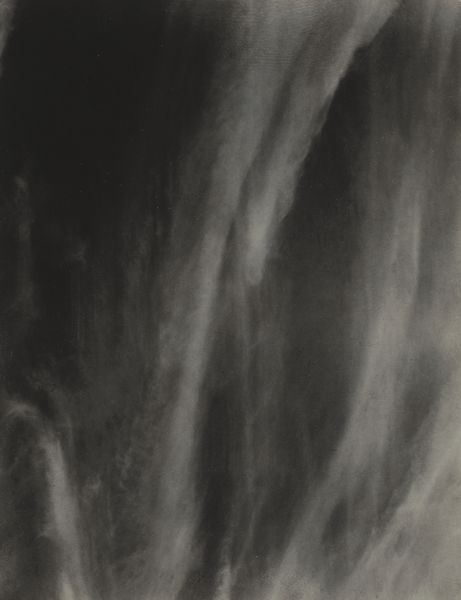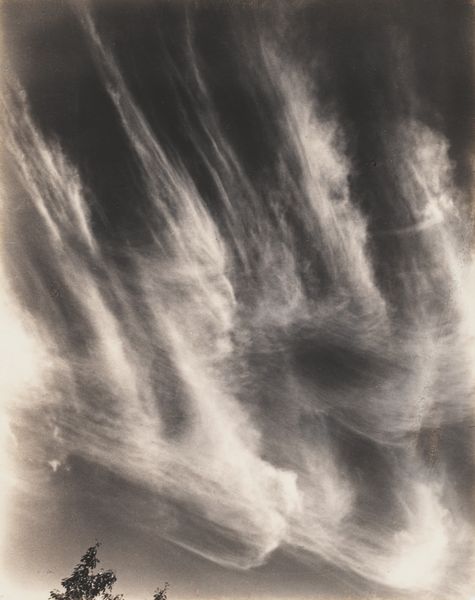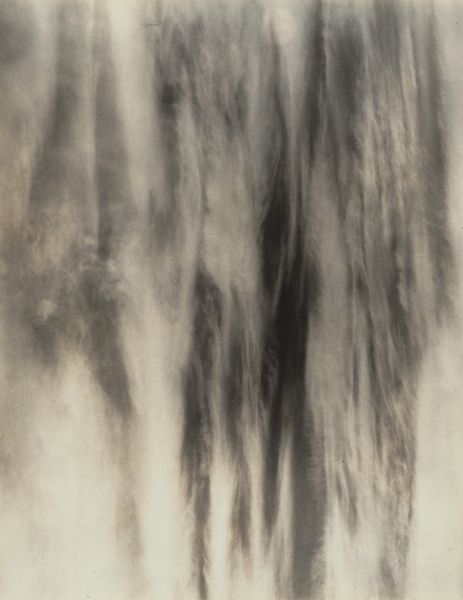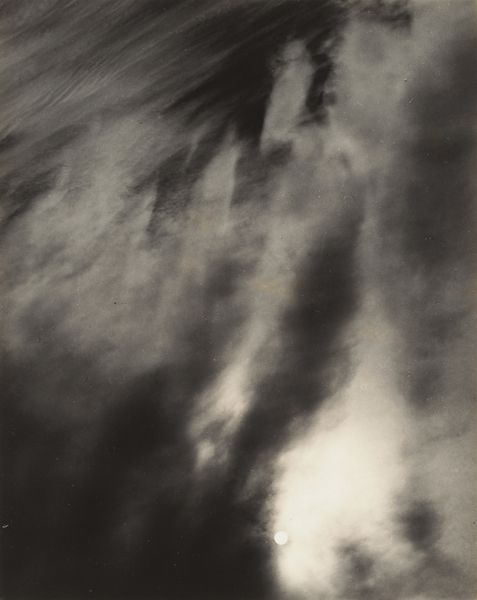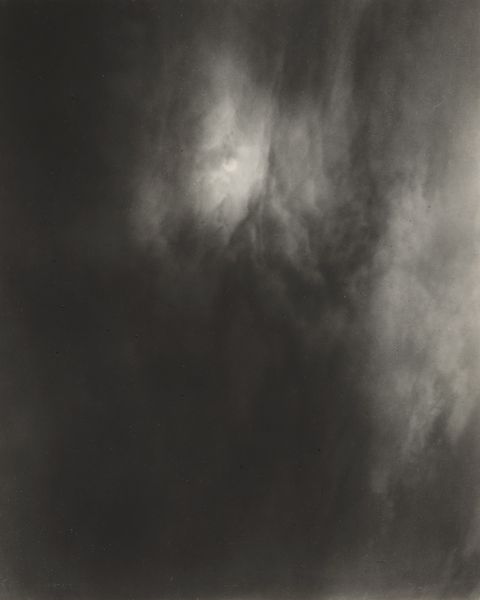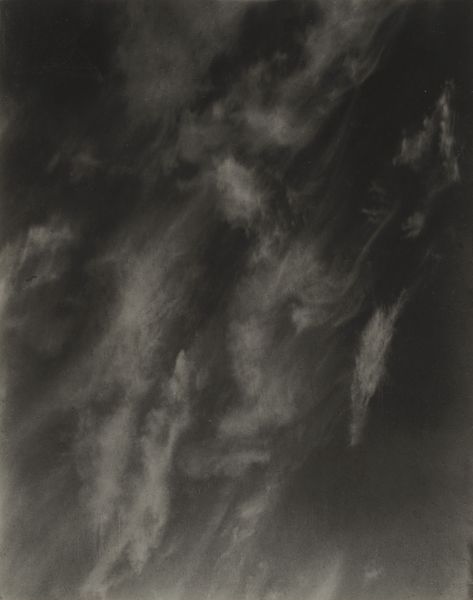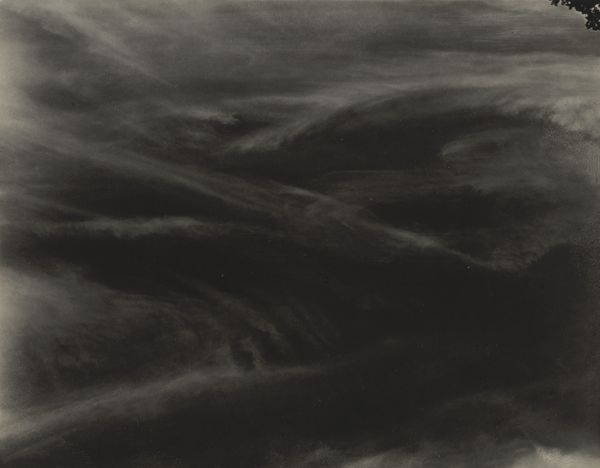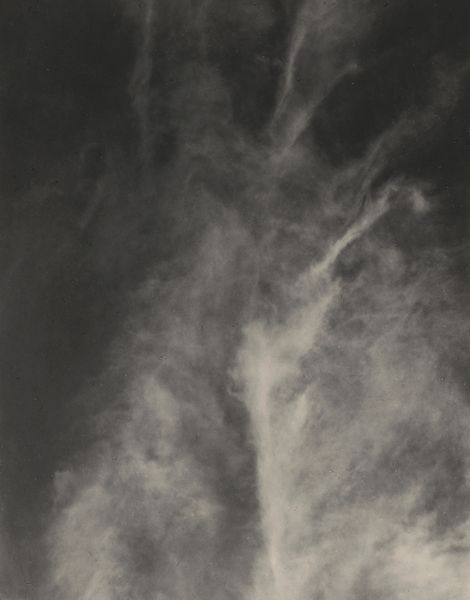
photography, gelatin-silver-print
#
pictorialism
#
landscape
#
charcoal drawing
#
photography
#
gelatin-silver-print
#
abstraction
#
charcoal
#
modernism
Dimensions: sheet (trimmed to image): 11.9 x 9.3 cm (4 11/16 x 3 11/16 in.) mount: 34.8 x 27 cm (13 11/16 x 10 5/8 in.)
Copyright: National Gallery of Art: CC0 1.0
Curator: This is Alfred Stieglitz’s "Equivalent," a gelatin-silver print from 1934. Editor: Woah. At first glance, it feels almost like looking up through deep water. It’s ethereal, dreamy, a bit melancholy. Curator: That’s a powerful reading. These photographs were, in fact, Stieglitz’s attempt to capture inner states, his emotions and philosophical ideas, using clouds as a visual metaphor. He termed them "Equivalents," suggesting they were equivalent to his feelings, not necessarily representations of specific places or events. Editor: So, the clouds aren't just clouds? They are stand-ins? Like… a sky Rorschach test? I see fragility in the way those whisps drift. Is that just me? Curator: Not at all. Stieglitz was deeply influenced by modernist ideas of abstraction. He believed that art should express the artist’s inner vision. The series emerged during a turbulent period in his personal life, especially regarding his relationship with Georgia O'Keeffe, which definitely shapes my perception. Editor: That contextual layer really hits hard. Knowing the turmoil, those once-dreamy clouds now carry a sense of... uncertainty. The lack of horizon makes me feel like I am adrift in a vast, cosmic ocean. The high contrast— that velvety black and streaking light – adds drama, no? Curator: Exactly. By removing earthly references, Stieglitz focused attention on pure form and emotional content, pushing photography toward the realm of abstract art. It really questions photography's documentary power, doesn’t it? It becomes less about recording what's "out there" and more about what’s "in here". Editor: Yeah! He transforms something utterly commonplace – clouds! – into a deeply personal and philosophical statement. It almost feels revolutionary, twisting photography in on itself to find meaning beyond mere representation. It reminds us we have to ask what we feel about art instead of what the piece represents on its own. Curator: It certainly invites us to reflect. It offers insight into Stieglitz’s modernist vision and the broader social anxieties swirling between the wars. Editor: This artwork just goes to prove: sometimes the most profound statements are whispered on the wind.
Comments
No comments
Be the first to comment and join the conversation on the ultimate creative platform.


